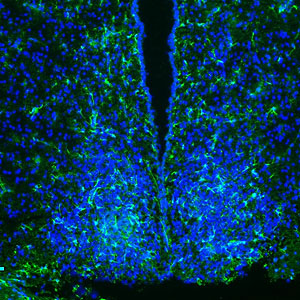People
Principal Investigator
Postdoctoral Researchers
Predoctoral Researcher
Research Assistant
-
Celia Martinez Perez
Laboratory Technicians
Latest publications
-
Estrogen-mediated coupling via gap junctions in the suprachiasmatic nucleus
European Journal of Neuroscience (Apr, 2024) DOI: 10.1111/ejn.16270 -
Ontogeny of the circadian system: a multiscale process throughout development
Trends in Neurosciences (Jan, 2024) DOI: 10.1016/j.tins.2023.11.004 -
Circadian glucocorticoids throughout development
Frontiers in Neuroscience (Apr, 2023) DOI: 10.3389/fnins.2023.1165230

